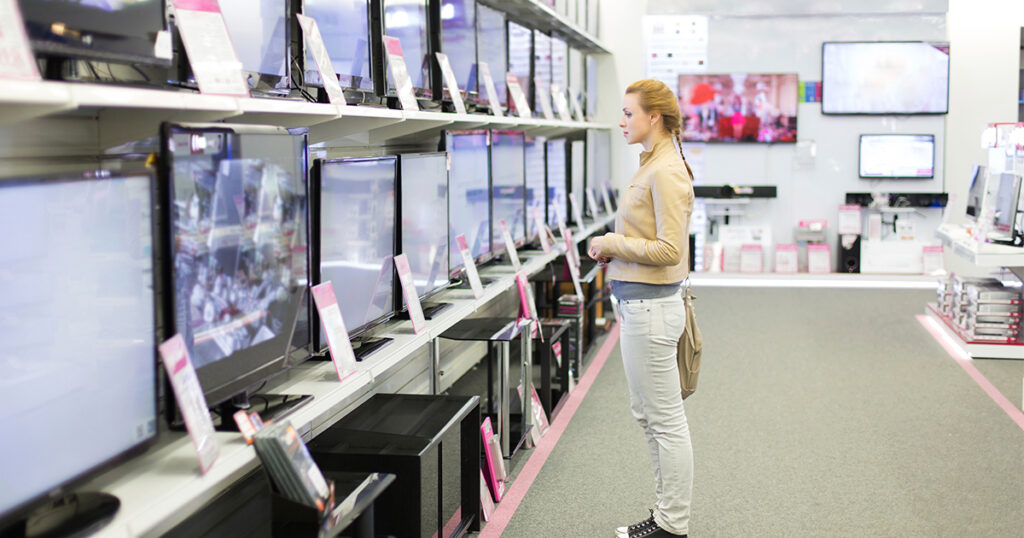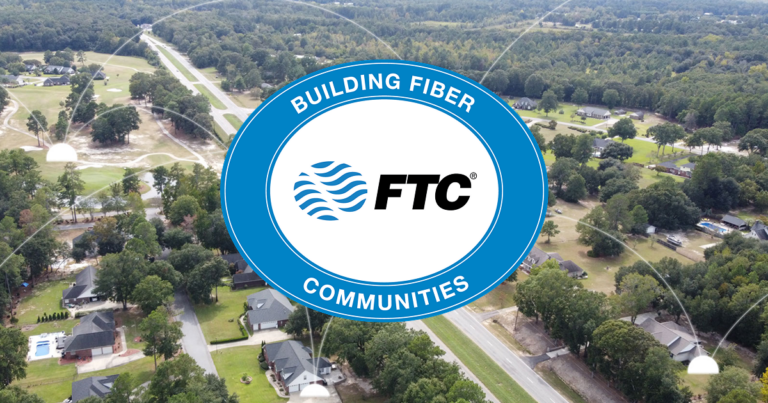Television technology is constantly evolving and it has certainly come a long way since the early cathode ray tube (CRT) televisions that seemed to take up half the room and were limited to a maximum screen size of about 40 inches.
Today’s flat-screen TVs, as opposed to the bulky old projection sets, are typically less than 4 inches thick, making them easy to mount on the wall to conserve space. And the largest screens can reach gargantuan sizes of nearly 300 inches. (One giant example, an especially large model from Samsung, is even called “The Wall” because … well, with a 292-inch screen size, it can fill an entire wall.)
Most of the latest TVs on the market today are of the LED (short for “light-emitting diode”) variety. At about a third of the thickness and half the weight of the preceding generation of LCD (liquid crystal display) sets, along with a more colorful and vibrant picture, these sets deliver a significant upgrade to today’s consumers. But among the latest LED offerings, there are four main types to choose from, all offering their own advantages and disadvantages.
To help consumers looking to make their best choice between the latest LED, OLED, QLED and mini-LED TV sets available, here is a quick rundown of what each technology is and has to offer:
- LED: The oldest of the LED varieties, and as a result the least expensive, is the LED television. As the name implies, this type of television uses light-emitting diodes (LEDs) rather than the fluorescent bulbs of yesteryear to illuminate the screen. While the screen itself typically uses LCD technology, a holdover from the preceding generation of TV sets, the LED illumination helps it deliver a better picture than the past models. Another feature of many of these sets, called “local dimming,” darkens the lighting in areas of the screen where it is not needed for particular images, allowing for better black levels in low-light shots.
- OLED: These TV sets are considered by most to be the pinnacle of current TV tech offerings and as a result carry the highest price tags. To enhance image quality and deliver wider viewing angles, they employ OLED technology, or organic light-emitting diodes. This type of illumination gives each pixel on the screen its very own light source. And because no backlighting is required with OLED TV sets, they can be significantly thinner than standard LED models. Further, because each individual pixel can be shut off entirely, these screens can also deliver extraordinary levels of contrast. OLED TVs also offer an additional advantage that eco-conscious consumers will appreciate: They boast more energy efficiency than any other type of television currently available.
- QLED: By incorporating “quantum dot” technology, QLED television sets are able to deliver a broader color palette and a picture that is more true to life. QLED TVs still use LED-backlit LCD screens, but they add a quantum dot layer to expand the screen’s available color range. They also deliver higher levels of contrast and more brightness than LED TVs. And while thicker than OLED TVs because they require backlighting, they can deliver a picture enhancement over LED TVs with a lower price tag than OLED TVs.
- mini-LED: To deliver more precise picture control, TVs featuring mini-LED technology use tens of thousands of tiny LED lights to illuminate their screens. These sets also offer more advanced contrast and brightness than standard LED screens, and like QLED TVs, they are less expensive than OLED sets.
Other TV terms to know
The rundown above covers the illumination technologies used in today’s TV screens, but each type of TV can also carry additional features to enhance the television’s resolution and functionality. Here is a short glossary of other options consumers should keep in mind when shopping for a new TV set:
- Smart TV: This term, which applies to most newer-model television sets, refers to a TV’s capability to connect to the internet via streaming apps such as Netflix, YouTube, Amazon Prime and Hulu. Smart TVs can also include a web browser for internet surfing. (Many older TVs can still be used for streaming, but without built-in Smart TV functionality, they require an additional connected device such as a Roku, Amazon Fire TV Stick or a Google Chromecast to do so.)
- 4K, 8K, etc.: A reference to a TV’s resolution capabilities, 4K means that a TV’s screen has four times the pixels of a 1080p HD television screen. (The term UHD, an acronym for “ultra high definition,” is often used synonymously with 4K and has the same meaning.) An 8K screen has four times the pixels of a 4K screen. Essentially, the higher the K value, the more pixels in the screen and the higher resolution and image sharpness the screen can deliver.
- HDR: This acronym stands for “high dynamic range,” which represents TV technology that delivers a wider spectrum of colors and a wider contrast range than SDR (standard dynamic range) sets, all while making bright tones brighter and dark tones darker.
- Refresh rate: The refresh rate of a TV refers to how quickly a screen can draw a new image and the number given represents the number of times per second it can do this. An important asset for viewing content with fast-moving action, such as sporting events and video games, a high refresh rate delivers smoother on-screen motion.
Want access to the best in home entertainment for your new, state-of-the-art TV set? Check out all the plans and packages available through FTC Digital TV. And for a limited time, new subscribers can choose up to six FTC Digital TV options — including CINEMAX, Paramount+ with SHOWTIME, Starz/Encore, HD Programming, Whole-Home DVR and Xtra (with 60-plus additional channels — FREE for two months! To make sure you maximize your streaming experience, get the Internet speed you need! To determine what you need, utilize FTC’s speed calculator at ftc.net/services/internet#speed-calculator. Then check out FTC’s Internet plans at ftc.net/services/internet/#rates-packages.
To make your move to a better home-entertainment experience, visit ftc.net or contact FTC at (888) 218-5050.




